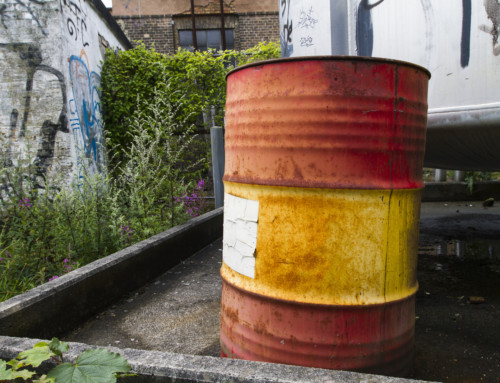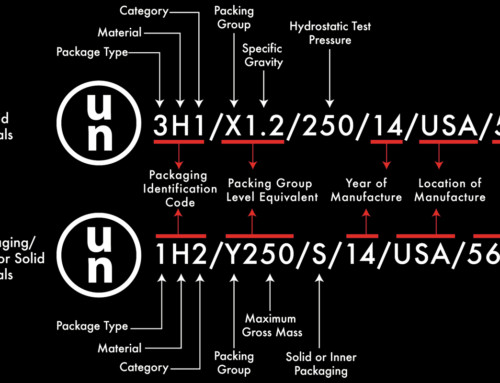Not always. Drums marked for liquids can be used for solids. However, drums marked for solids can not be used for liquids.
Background
UN markings on a drum let you know that the container has been tested to meet the Performance Oriented Packaging (POP) standards outlined by the Department Of Transportation (DOT) at 49 Code of Federal Regulations (CFR) 178. If a drum is UN rated, the UN markings will be stamped on the drum. The UN numbers marked on the drums show whether they are rated for solids or liquids. You can tell if a drum is rated for liquids by looking at whether or not the markings on the drum include a specific gravity number and hydrostatic pressure number. For example a liquid rated UN marking will look something like:
- UN 1A1/Y1.8/300/11
The 1.8 in the UN number indicates the specific gravity or relative density of the material that the container can hold (water is 1.0). The 300 in the UN number indicates the hydrostatic pressure which is the kiloPascals that the packaging must be capable of withstanding at certain temperatures. Drums rated for solids will look something like:
- UN 1A2/x400/S/11
The 400 after the X rating in the example indicates the maximum gross mass in kilograms that the container is rated for. Drums rated for solids do not need to be tested for hydrostatic pressure and as you can see in the example there is no number after the packing group and maximum gross mass number. Also, containers rated for solids will include an “S” in the UN number.
How do I calculate the gross mass of solids that can be safely transported in a liquid rated drum?
In general, a single or composite non-bulk packaging which is tested and marked for liquid hazardous materials may be filled with a solid hazardous material to a gross mass, in kilograms, not exceeding the rated capacity of the packaging in liters, multiplied by the specific gravity marked on the packaging, or 1.2 if not marked. But, if you are filling your liquid rated container with solid material from a different packing group you’ll have to alter the equation.
We’ve made it easy by creating a calculator to help you with the calculations.It can be found on our website here.
If you’d like to do the calculations yourself take a look at 49 CFR §173.24a(b)(3). and match your container’s rating to the packing group of the solid going in it. Then do a bit of arithmetic, as indicated by the law.
Can a drum marked for solids be used to ship liquids?
No. A drum for liquids must be hydrostatically and leakproofness tested. A drum marked for solids has only been drop and stack tested.
If you have any questions leave a comment below and I’d be happy to help.










